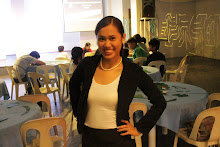The character was called Batman,
but he never had wings. The villain was called the Joker, but he never was
funny to start with.
There is too much irony in the comic book turned into movie,
“Batman”. I recall watching the series on local television, wondering why he
had to take the batmobile instead of his private plane.
Batman has also been on the big screen a couple of times. With every
screening, there is a change in the production company, cast, scoring and
story. And with every screening, the film moves a notch higher in quality.
Today it is the most sought after movie. Long lines form in
the cinema with every new installment of the batman series. The picture is no
less the same in the United States.
But in a Colorado midnight screening packed with
fans, a doctorate dropout hurled a gas canister, pulled out his gun and shot 12
people dead. Fifty-nine more were injured. The assailant’s name was James
Holmes.
Holmes graduated with highest honors in neuroscience at the
University of California, Riverside. He then enrolled in a neuroscience PhD
program at the University of Colorado in Denver. He was “at the top of the
top”, a brilliant mind at the young age of 24.
But something definitely went wrong. According to an Associated
Press report, his loner personality and excessive focus provoked Holmes into
believing he was the Joker. He was too engrossed with his career that he
isolated himself from the real world. This caused him to think he is an actor
in a movie and drove himself crazy into staging a tragedy. His life was wasted.
Holmes never had the guidance he needed, or the parental
support he deserved even if he used to be a counselor.
In the Philippines, a number of
the youths have backgrounds similar to Holmes. Some do not have a school to go
to, parents to talk to, or worse, a home to live in. The numbers of delinquent
minors are rising. Their ages are falling. Where has the hope of the next
generation gone?
The biggest challenge in this dark world is to maintain one’s
sanity while upholding excellence. No student in his/her right mind would want
to become the suspect in a crime. No student would also want to lose his/her
sanity in the process of becoming a professional.
If we opt to become like a James Holmes, our lives would be a
total blackout, a product of our imagination. What good he could have done was
to balance his interests without letting go of his dreams and ambitions. As a
young person, it is very easy to do that. The youth is vulnerable to pain. We tend
to eat up our emotions until it gets the most of us.
Holmes could have become a great doctor in neuroscience. He
could have helped their nation in his chosen field. He could have even become
an inspiration to a million other lost teenagers. He ultimately blew the chance
of becoming a model to the young.
The big screen is not there for us to mimic, rather it
mirrors society. The Joker symbolizes a picture of a dissolute youth who took
out his disappointment on his mortal enemy. Eventually, he destroyed his life
with his schemes. Holmes took the Joker’s story as his own story. If you’re
thinking likewise, stop. There’s more to life than your struggles and pain.
Did the Joker ever make Batman laugh? I wonder. For sure,
James the Joker didn’t. Don’t even think about doing the same.


